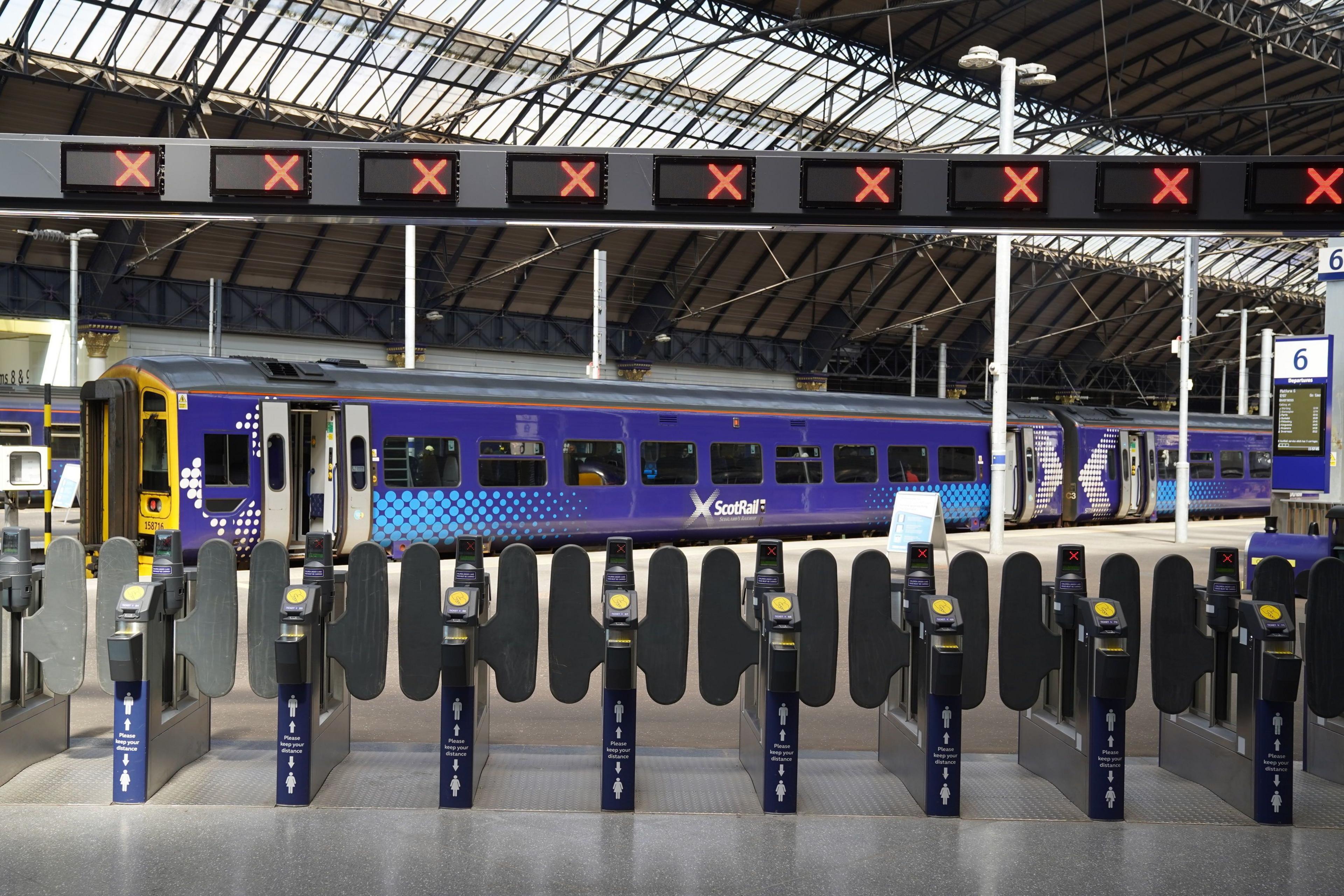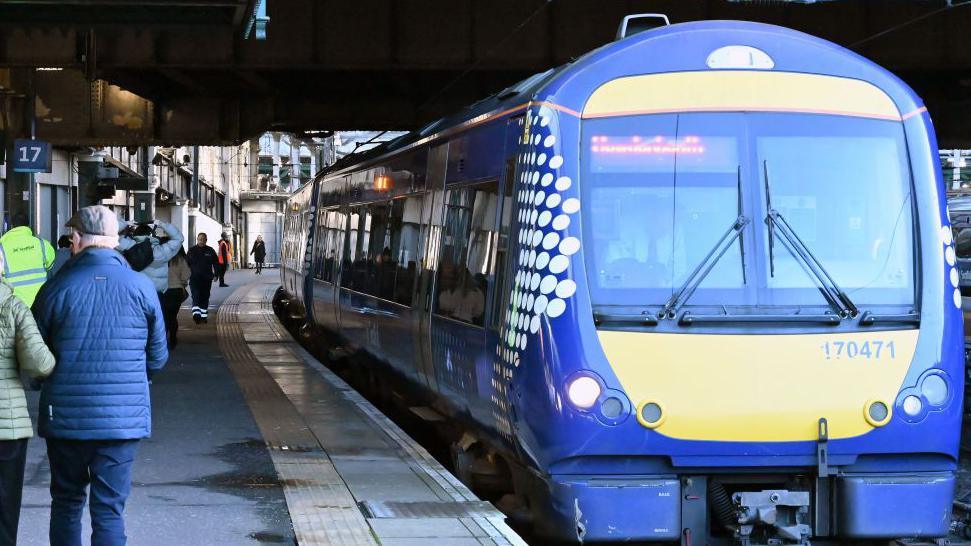Why are there not enough train drivers in Scotland?

Amina Ibrar has been training to become a ScotRail train driver for the last seven months
- Published
If everything runs to Amina Ibrar’s timetable she’ll be driving trains between Edinburgh and Glasgow for a living by next May.
Amina is seven months into her training course to become a ScotRail train driver after five years as a ticket examiner for the publicly-owned rail operator.
“It’s harder than everybody outside of the railway thinks it is, knowing what to do when things go wrong is the most challenging bit,” she said.
"I'd never experienced being in the front cab. When I first went in it was strange having that view of the track and everything surrounding it. It was scary but I love it now.”
Amina is one of 160 trainee drivers which ScotRail is hiring this year and she will be earning more £50,000 a year just months after qualifying.
It is a salary well above the national average but despite this there remains a shortage of qualified train drivers in Scotland and across the UK.
Like much of the rail industry, ScotRail has not had enough drivers to staff its services for years now.
Instead it relies on existing drivers doing overtime and working on rest days - earning £525 a time for this - to keep its services going.
A service effectively running on goodwill will hit the buffers eventually and in July a pay dispute saw many drivers make themselves unavailable for overtime or working on a Sunday, which is not currently part of the ScotRail working week.
Without enough drivers, Scotland's train operator moved on to an emergency timetable which left large swathes of the country with a severely reduced service in the busy summer months.
That lasted until October, when the pay dispute was over and the normal timetable resumed - along with a hike in the price of ScotRail tickets.
Near record numbers leaving
ScotRail says it has the largest driver recruitment campaign the UK with Amina one of 112 trainees recruited since April, and 48 to follow by the end of March next year.
But the rail operator still faces a big challenge in reducing its reliance on overtime.
This is because near record numbers of its existing drivers are leaving, either for other jobs or retirement (nearly a third of ScotRail's drivers are over the age of 55).
In 2023/24, a total of 81 drivers passed the firm's training scheme but in the same year 75 existing drivers left.

ScotRail has not had enough drivers to staff its services for years
The other challenge facing ScotRail is a practical one, as Mark Ilderton, the operator's service delivery director, explained:
“Driving a train is a highly skilled job and the training process can take up to two years, with time spent in the classroom and on train.
"There is a limit to how many trainees we can have out gaining practical handling experience at any one time," he said.
"So it's not a case of being able to say let’s bring in 300 trainees and we'll be able to put them all out on the network learning to become drivers at once. Operationally that just wouldn’t be possible.”
Learning the route
Another dimension to the training challenge is the fact that ScotRail’s drivers learn their trade on a specific route.
This means Amina, who is based out of the Edinburgh depot, is learning routes primarily on the east of the country and could not, for example, be switched to driving trains on the west coast without further training.
ScotRail instructor Colin Morison explained: "Driving a train is not like driving a car.
“We sometimes can take a mile to stop when we're going full speed at a station so we have to know each route inside and out; every turn, every bend, every signal, every set of points, every station.
“We have to know everything about the route before we get qualified on it.”

Strikes have caused problems across the network
ScotRail has previously said it wanted to reduce its reliance on drivers working on their rest days by 2027.
This was tied up in a 2022 pay dispute settlement, external, which includes a commitment to bring Sundays into the working week within five years.
But the exodus of drivers means this will a challenge, according to the minutes of ScotRail’s March board meeting.
They state: “Despite the driver training programme being expanded to accommodate 160 trainees each year, the number of leavers mean it will be 18 months before productive driver numbers start to increase to the numbers required to reduce rest day working”.
'Consequences of neglect'
Jim Baxter, executive council member for Scotland of the rail trade union Aslef, said ScotRail is dealing with the considerable challenges it inherited from years of private operation.
He added: “We are now seeing the consequences of that neglect: a significant portion of the workforce, having endured years of intense shift work in a demanding environment, are reaching a point in their careers where job share and early retirement are increasingly attractive options.
“Additionally, particularly in the central belt, our members have opportunities to move to better-paying roles outside ScotRail, which only adds to the staffing challenges we face.
“We recognise that ScotRail has a long-term plan to address these issues, and Aslef remains committed to working closely with them to ensure these challenges are met effectively, for the benefit of both our members and the travelling public."
- Published30 September 2024

- Published9 July 2024

- Published25 September 2024
